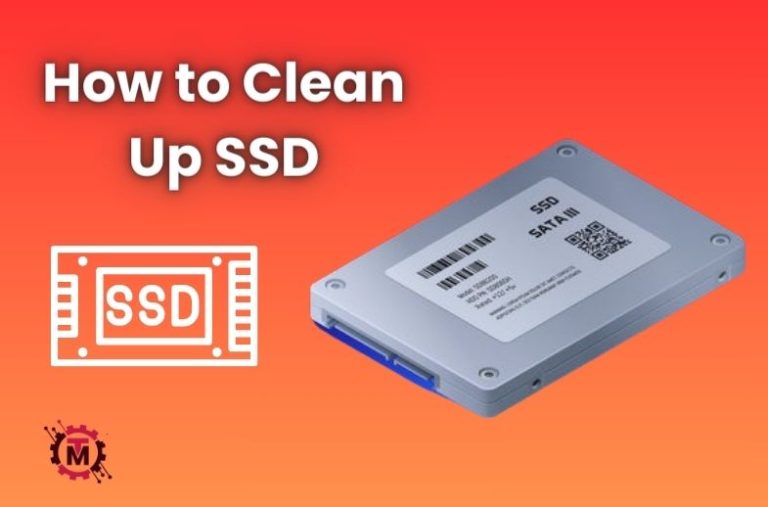Solid-state drives (SSDs) have become a standard component in today’s computing systems due to their high speed, reliability, and durability. But like any storage device, they can become cluttered with unnecessary files, leading to decreased performance over time.
Regularly cleaning up your SSD is a crucial part of maintenance that not only enhances its performance but also extends its lifespan. This article will guide you through the process of cleaning up an SSD and provide best practices for its maintenance.
What are SSDs?
SSDs, unlike traditional hard drives (HDDs), use flash-based memory, which makes them faster and more efficient. However, SSDs handle data differently.
For instance, data fragmentation, a common issue in HDDs that reduces their performance, is not a problem for SSDs. Consequently, some traditional maintenance tasks, like defragmentation, are not only unnecessary but potentially harmful for SSDs.
Clean Up Your SSD
Preparing for Cleanup
Before cleaning up your SSD, it’s essential to back up all critical data to prevent accidental loss. Furthermore, identify files, applications, and programs that are no longer needed.
Also, familiarize yourself with the TRIM command, a feature that helps maintain the performance of your SSD over time by efficiently wiping data that is no longer considered in use.
Cleaning Up Unnecessary Files
Start by using the built-in Disk Cleanup tool in Windows to remove temporary and unnecessary files. For a more thorough cleaning, consider third-party applications like CCleaner.
These applications can help delete temporary files, cache, logs, and even duplicate files or old backups, freeing up significant space.
Managing Installed Applications
Go through the list of installed applications and uninstall those no longer needed. Some third-party software uninstallers can ensure complete removal without leaving residual files.
Furthermore, manage your startup programs by disabling those that aren’t necessary at startup, which can improve your system’s boot time and overall performance.
Optimizing File System
While defragmentation isn’t needed (and is usually not recommended for SSDs), using tools like TRIM and optimization utilities can help maintain SSD performance. TRIM, as mentioned earlier, ensures efficient data erasure, while optimization utilities can help with partition alignment and other SSD-specific optimizations.
Monitoring Health and Performance
Regularly check the health of your SSD using tools provided by the SSD’s manufacturer. Monitor the temperature of your SSD and take precautions if it gets too hot. If you notice any performance issues, take time to diagnose and address them promptly.
Is it Possible to Recover Deleted Data on SSD?
Recovering deleted data from an SSD is significantly more complex than recovering from a traditional hard drive (HDD) due to the way SSDs manage data.
SSDs use a process called garbage collection to prepare for new data. When a file is deleted, or a drive is formatted on an SSD, the SSD marks the data blocks as not in use, but it doesn’t immediately erase them. This makes quick file recovery possible in some cases using professional data recovery software.
However, SSDs also utilize a command called TRIM to manage their storage. When TRIM is enabled (as it is by default on most modern systems), the SSD is informed when file deletion or format occurs, allowing it to immediately wipe the blocks that contain the file, freeing up space and improving performance. Once TRIM has been run on deleted data, recovery is impossible with current technology.
So, while it’s technically possible to recover deleted data from an SSD, success greatly depends on whether TRIM has run since the deletion occurred. If TRIM has already wiped the blocks containing your file, recovery won’t be possible.
If you’ve accidentally deleted important files and want to recover them, it’s best to stop using the drive immediately to prevent further data writing and seek professional help. The chances of recovering data are significantly higher if the data hasn’t been overwritten. You can also use special software and detailed instructions in critical cases when the SSD is broken.
Remember, the best way to prevent data loss is to regularly backup important files to a separate storage medium. Regular backups can save you the stress and uncertainty that comes with attempting to recover deleted data.
Best Practices for SSD Maintenance
For regular SSD maintenance, update the SSD’s firmware regularly. Try to avoid excessive writes to the SSD and minimize unnecessary operations.
Aim to maintain at least 10-20% of the SSD’s total capacity as free space for optimal performance. Lastly, keep your operating system and drivers updated to ensure compatibility and performance.
Final Verdict
Regular SSD cleanup and maintenance are essential practices that ensure your drive’s optimal performance and longevity. By implementing the steps outlined in this article, you can keep your SSD in good health, contributing to the overall performance and lifespan of your system. Remember, a well-maintained SSD is th key to a fast, efficient, and reliable computer system.


